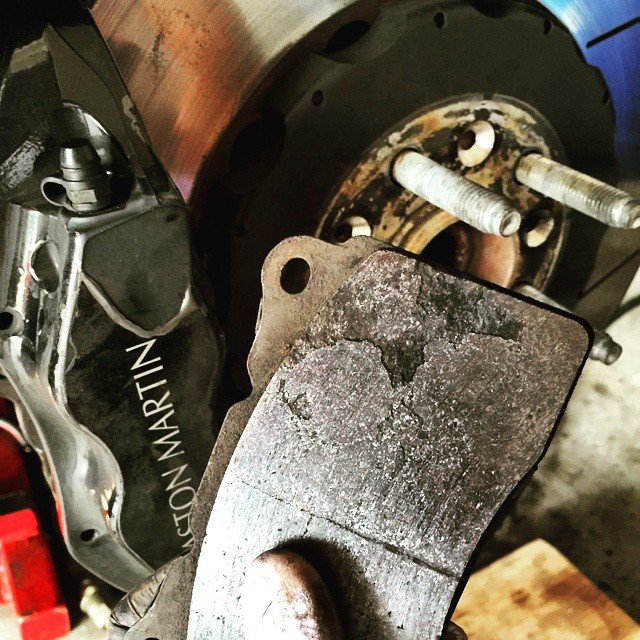
Brake Pad Bedding Procedures
DISCLAIMER
The information provided here is based on manufacturer guidance. Proper bedding does not guarantee a dust-free or squeal-free experience due to other factors that may contribute to these issues. Always use pads that meet or exceed the performance requirements for how a vehicle is driven.
Below are the bedding instructions for the various pads I sell in my Online Store, based on manufacturer guidance for each one. Following these is a best practice - meaning, it’ll give you the best chance for success to have the optimal performance from a set of brake pads. For some pads, that means the best stopping performance. For others, it means complete elimination of brake dust and squeal.
However, these procedures do not guarantee optimal performance as there are other factors that can reduce or eliminate a given performance aspect.
Brake squeal can be caused by any of these situations:
The calipers, retention pins, spring clips, were not thoroughly cleaned during installation of the new pads.
Anti-squeal was not applied to the correct places or in adequate quantities to the retention pins, spring clips, or brake pad backing plates.
The brake rotors have pad material from the previous set of brake pads.
The brake rotors are worn out or damaged and need to be replaced.
The brake caliper pistons are seized or otherwise not moving freely.
The brake pad design is susceptible to squeal (aggressive friction material and/or lack of chamfering)
The new brake pads were not bedded in properly.
Another thing worth noting is that many people have their own way of bedding brake pads. The information presented here isn’t meant to dispute or refute anyone’s methods, nor is it to start any debates or anything else. All I’m doing here is sharing what the brake pad manufacturers say to do for each of these pads.
Hawk HPS 5.0 brake pads
The Hawk HPS 5.0 is designed for street and occasional track use, even for an early DB9 or V8 Vantage with 4-piston front brake calipers. This is the brake pad I use on my supercharged 2007 V8 Vantage for both street and track.
Hawk HPS 5.0 Bedding Instructions
Follow the steps below to bed in the brake pads. Apply consistent brake pressure for each stop, and do not drag the brakes while doing this.
Make 6 to 10 stops from 35 mph applying moderate pressure.
Make 2 to 3 hard stops from 45 mph.
Allow the brakes to cool for 15 minutes.
Pagid RSC1 brake pads
Pagid designed the RSC1 brake pad as an all-around brake pad for carbon-based rotors, like Aston Martin’s CCM (carbon ceramic matrix) brake rotors. These pads have high modulation and are friendly on those obscenely expensive carbon rotors.
Pagid RSC1 Bedding Instructions
The Pagid RSC1 is classified as a racing compound. As such, its bed-in procedure is more aggressive than most.
Brake 10 times with mid pressure, reducing speed from 150 km/h to 80 km/h (90 mph to 50 mph).
Brake 5 times with high pressure, reducing speed from 180 km/h to 60 km/h (112 mph to 40 mph), with maximum acceleration between brakes.
Brake 3 to 5 times with mid pressure, reducing speed from 150 km/h to 80 km/h (90 mph to 50 mph).
Porterfield R4 brake pads
The Porterfield R4 is the racing variant of the R4-S brake pad. This pad is made specifically for track and racing use and I highly recommend it not be used on the street (yes, I tested them - they were phenomenal on track but the insane squeal in normal street driving conditions was awful, even ignoring the high dust levels).
Porterfield R4 Bedding Instructions
Follow the below to bed in the pads. Each should be made with even pressure (don’t “stab” the brakes), and don’t come to a complete stop. Allow equal time on and off the brakes.
Brake 5 times at 40% pedal pressure, reducing speed from 25 mph to 5 mph.
Brake 5 times at 50% pedal pressure, reducing speed from 50 mph to 25 mph.
Brake 5 times at 70% pedal pressure, reducing speed from 75 mph to 35 mph.
Coast without braking to allow the brakes to cool completely without engaging them.
Porterfield R4-S brake pads
The Porterfield R4-S is the street variant of the R4 brake pad. It’s by far the most popular brake pad I sell and gets rave reviews. Keep in mind that this pad is fine for track use if you have 6-piston front brake calipers, but it cannot handle track use if you have 4-piston front calipers (yes, I tested them and got really bad brake fade in two fast corners on the track, nearly plowing straight through Turn 1 at one point). These also get extremely positive reviews from people with 2nd Century cars like the DB11 and 2018+ Vantage because they have a more progressive initial bite and pedal feel, making them less “grabby” in stop-and-go traffic.
Porterfield R4-S Bedding Instructions
These pads are pre-bedded, so just install them and drive them normally and they’ll complete bed-in on their own in about 100 miles.
Avoid coming to a complete stop from 60+ mph (unless necessary for safety) after first installing them to prevent glazing.
Avoid aggressive braking for the first 100 miles.

